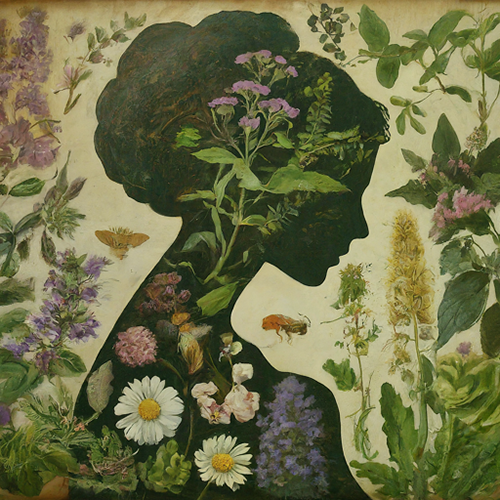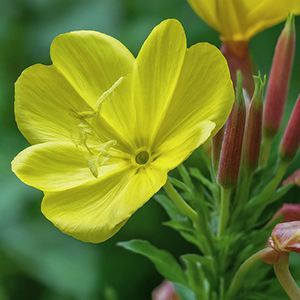
Herbal remedies have a long history of use in traditional medicine for various female disorders. Some herbs are purported to help with conditions like menstrual cramps, hormonal imbalances, menopause symptoms, and even fertility issues. For example, chaste berry is sometimes used to manage PMS symptoms, black cohosh may offer relief during menopause, and red raspberry leaf is traditionally consumed to support uterine health.
However, it’s vital to recognize several things. First, scientific evidence supporting the effectiveness of many herbal remedies for female disorders is limited or mixed. Second, herbs can interact with medications or have side effects. Third, the quality and purity of herbal products can vary widely. A healthcare provider can assess your situation, guide you on safe and appropriate use, and monitor any potential risks associated with incorporating herbal remedies into your treatment plan.
Specific Female Disorders
Female sterility – The inability of women of fertile age to conceive. It can have organic causes, such as obstruction of the fallopian tubes, or have functional reasons. Medicinal herbs assist only in the latter case by stimulating ovary functions and balancing the hormonal system.
Pregnancy—The following are especially useful during pregnancy due to their stimulating and nourishing properties. Edema (fluid retention), which is quite common during pregnancy, can be alleviated with safe and mild diuretic herbs such as corn stigma. All oxytocic and emmenagogue herbs must be avoided during pregnancy since they contract the uterus.
Nipple Sores – These are small skin ulcers on the nipples of breastfeeding women. The treatment consists of hygiene and the help of any of these herbs. Nipple scars or sores are the most important causative factor of mastitis (inflammation of the mammary glands) during breastfeeding. This inflammation can provoke an excess of pus, obliging them to give up natural breastfeeding. Therefore, paying enough attention and adequate treatment to these sores is essential.
Mastitis is the inflammation of mammary glands or breasts that occurs during natural breastfeeding. In many cases, the causative factor is, as formerly explained, the appearance of nipple sores. Besides treatment with antibiotic substances, breast milk retention must be avoided, and a local treatment based on compresses or poultices with the herbs mentioned here must be applied.
Most Common Female Disorders


Dysmenorrhea—It could be defined as an irregularity of menstrual function, usually accompanied by pain and general discomfort. Secondary dysmenorrhea is a consequence of diverse organic diseases of the genital organs. However, often, no organic pathology is found, and in this case, we have to talk about primary or essential dysmenorrhea.
Dysmenorrhea, caused by spasmodic contractions in the uterus, causes pain. The phytotherapeutic treatment provides antispasmodic herbs that relax the uterus, emmenagogue herbs that balance menstruation, and plants that regulate hormonal balance, such as evening primrose or borage.
Irregular Menstruation – The menstrual cycle depends on the hormones secreted by the hypophysis and the ovaries. Menstrual cycle disorders are relatively frequent in women’s lives, such as during teen years and menopause. As a rule, these disorders are caused by a lack of an excess of sexual hormones. The following medicinal herbs have balancing properties on the endocrine glands, which produce these hormones and contribute excellently to normalizing the menstrual cycle.
Excessive Menstruation – Once the causes of hypermenorrhea or excessive menstruation are ascertained, and whether any organic reason has been discarded, these herbs can help reduce the amount of menstrual blood or the duration of menstruation due to their vasoconstriction properties (contract small arteries and capillaries) and their hemostatic properties (promote blood coagulation) respectively. Oxytocic herbs are recommended. All plants are taken orally as infusions or decoction.
Menopause is a period in a woman’s life during which menstruation and reproductive activity cease. It is not a disease but a time of hormonal change during which a woman’s body must adapt to decreased ovarian functions. Intake of herbal teas made with these herbs can alleviate disorders associated with this stage of women’s life.
Ovary, Insufficiency—Ovaries are the female sex glands. They have a double function: they produce sex hormones (estrogens and progesterone) and ovules or germinal cells that join with spermatozoids to create a new being. The plants mentioned here can stimulate both ovary functions.
DISCLAIMER: All content on this website is presented solely for educational and informational objectives. Do not rely on the information provided as a replacement for advice, diagnosis, or treatment from a qualified medical expert. If you are pregnant, nursing, or have any preexisting medical concerns, talk to your doctor before using any herbal or natural medicines.
REFERENCES
- George D. Pamplona-Roger, M.D. “Encyclopedia of Medicinal Plants.” George D. Pamplona-Roger, M.D. Encyclopedia of Medicinal Plants. Ed. Francesc X. Gelabert. vols. 2 San Fernando de Henares: Editorial Safeliz, 2000. 616, 617, 618, 619, 620. Print.
- https://www.nccih.nih.gov/health/black-cohosh
- Mount Sinai Health Library: https://www.mountsinai.org/health-library/herb/dong-quai
- https://www.nccih.nih.gov/health/evening-primrose-oil
